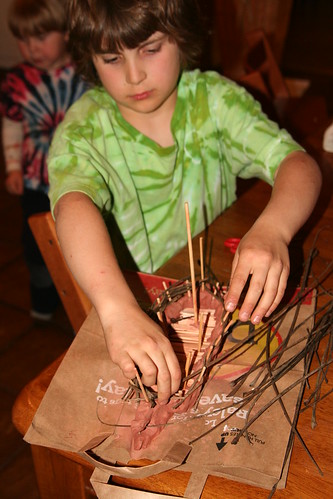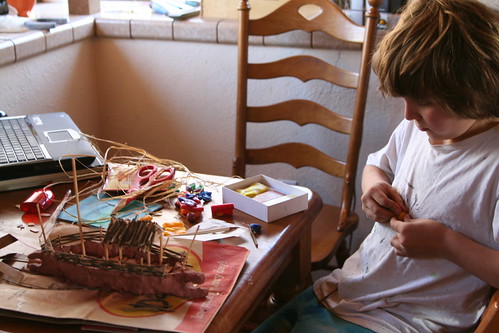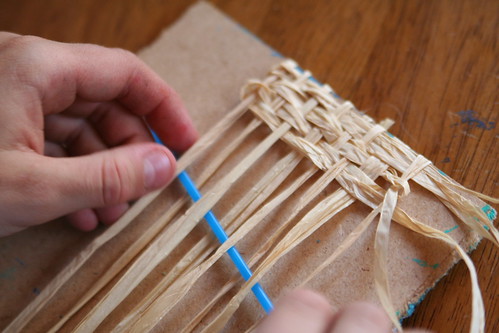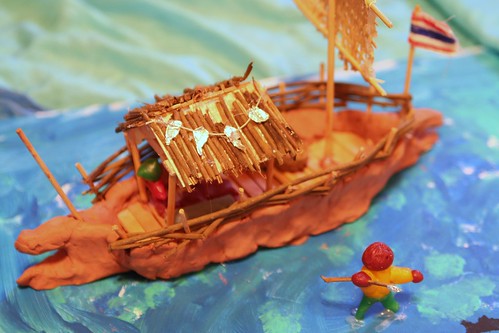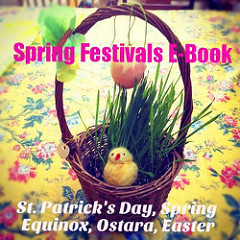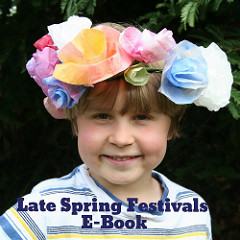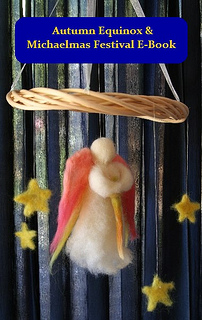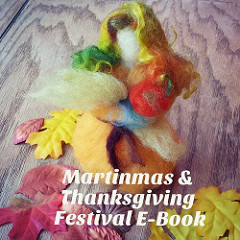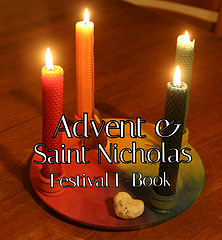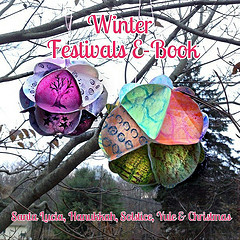Third Grade Shelter Project
Lucas has been very busy for the last week and a half working on his major project for third grade. In the Waldorf schools, third graders study lots of practical things like cooking, measuring, building, and making clothing. They also study shelters—the various types of homes people made or make for themselves in different parts of the world throughout history. The students have to choose a people with a particular type of shelter, build a diorama of their shelter, and write a report about it.
This the first big homework project, and it synthesizes what the students are learning in school with all kinds of other awesome qualities of third graders: their practicality, their extensive experience of modeling, their creative thinking, and their love of measuring, using tools, and building. It also calls into use their developing writing skills, their recent study of grammar and parts of speech, their artistic ability, their awakening to the real world around them and awareness of others, and their blossoming love of realism.
Lucas wondered if he could make a house boat for his shelter project—after all, some people live on house boats. After some research, he and Ian hit upon a people indigenous to the Andaman Sea called the Moken, and we checked in with Lucas’s teacher to get her okay to proceed.
The Moken live on their handcrafted boats, called kabang, most of the year, and travel around the islands off the coast of Thailand. During the monsoon season, they live on land, but that’s only about three months of the year. They fish and trade fish for rice. Their kabang keels are dug-out logs that are passed down from father to son. “It can take a family four months to build a kabang. The traditional boats have sails and oars, but the new boats run on diesel engines” (from Lucas’s report).
Lucas used clay to make his kabang keel. Bamboo skewers were used as struts on which to weave the boat’s gunwales, which are traditionally made from zalacca wood. Lucas made his from garden twigs. He built the shelter on the deck of the kabang and thatched it with more twigs.
Lucas modeled two Moken people out of beeswax. (Whole families live on these kabang, and the boats travel in groups of six or more.)
Then Lucas wove a sail from raffia. The Moken use pandanus leaves to fashion their sails.
Here is the finished kabang shelter. Mr. Moken is standing in the sea, fishing with a spear. The kabang flies the Thai flag. The Moken people spend much of their time in the sea diving for shellfish, and studies show they’ve developed better underwater eyesight. “The sad thing is that there’s only about 1,000 Moken living on the sea today because the Burmese and Thai governments are trying to get them on land.”
“I want to go there and help them out. I also want to build a kabang with a Moken,” Lucas concluded.
This was a tough project, but one that was very rewarding, I think. Making something with his hands helped Lucas engage with the material, much more so than simply writing a report would have done. It was also great to see Lucas work so hard over so many days, with his dad’s careful support and supervision.
Lucas and his classmates will also present their shelters to their class and talk about them. They will answer questions from the teacher and classmates as well. I’m proud of all of these kids for accomplishing something that took two weeks or so to make; perseverance is an important trait to develop.
